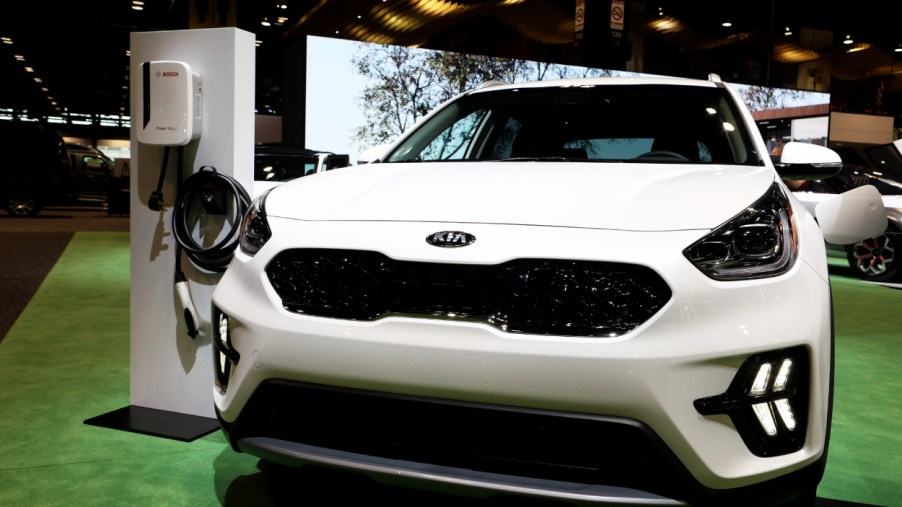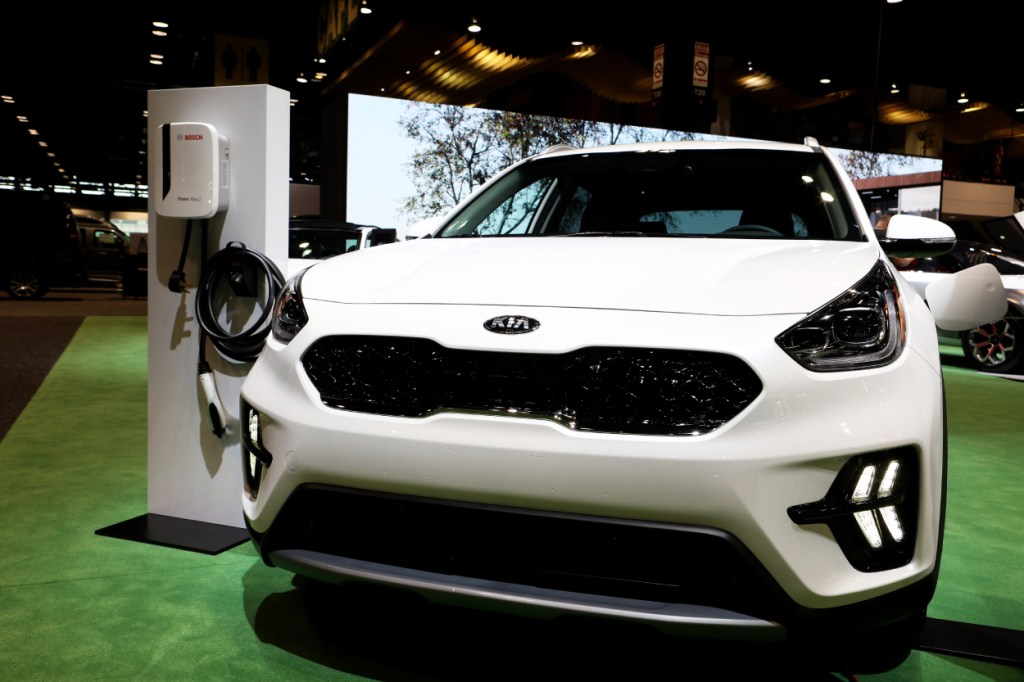
Avoid This Kia Model if You Want a Good Driving Experience
The Kia Niro PHEV is one of the newest additions to the growing hybrid market. Kia also offers the Niro in regular hybrid and all-electric varieties, with the plug-in hybrid acting as a happy medium. However, critics on Cars.com say you should avoid the Kia Niro PHEV if you want the best performance.
In past years, electric vehicles were known for disappointing ride qualities. Recent models, like the Cadillac CT6 plug-in, can be just as fun to drive as its gas counterparts. Unfortunately, it seems that the Kia Niro PHEV hasn’t evolved as much as its peers.
What makes for this unpleasant driving experience?
The Kia Niro PHEV has a 1.6-liter four-cylinder engine and a 60-hp battery pack, giving it 139 hp in total. It comes paired with a six-speed dual-clutch automatic transmission and front-wheel drive. Cars.com thinks Kia probably should have stuck with a CVT, which would probably have delivered more accurate and quick shifts.
The Niro PHEV also has regenerative brakes, but these feel unrefined and jerky compared to other plug-in models. This makes stop-and-go city traffic a hassle to navigate inside the Niro PHEV. It’s also hard to take advantage of the battery pack’s full range thanks to acceleration issues.
Testers on Cars.com also found that Kia Niro PHEV is sluggish both in town and on the highway. Putting it into sport mode also didn’t improve its speed. It’s hard for the car to stay in EV mode because it needs so much power to accelerate. Because the Niro PHEV doesn’t have a resistive heating system, it also uses gas power when climate control is activated.
Despite a well-weighted steering wheel, the Kia Niro PHEV is too heavy for truly confident handling. Because of its stiff suspension, riders should also expect a lot of jolts while riding over rough pavement. There’s also plenty of noise, both interior and exterior, to be heard while driving the vehicle.
Owning a Kia Niro PHEV isn’t completely bad
The Kia Niro PHEV’s biggest selling point is its incredible gas mileage. It’s rated for 26 miles of all-electric power, but Cars.com reports a range of nearly 33 miles. Combined with the gas engine, it can drive for 560 miles before needing more fuel and a recharged battery. Charging times are also reasonable, as short as 2.5 hours with a 240-volt charger.
Despite its uncomfortable ride quality, the Niro PHEV’s seats are actually very supportive. There’s plenty of room for adult passengers to stretch their limbs in both the cabin and the back row. Heated and ventilated seats are also available on higher trims.
Cars.com was also impressed with the Kia Niro’s infotainment system. It has a healthy mix of digital controls and physical buttons, plus adequate standard features for the price. It starts at around $30,000.
Luggage space is predictably smaller thanks to the battery pack, but its wide liftgate makes loading and unloading easier. There are also plenty of deep storage cubbies throughout the interior.
Should you skip the Kia Niro PHEV?

There’s no question that the Kia Niro PHEV is one of the most efficient hybrids available. However, its lousy ride quality will no doubt hamper your enjoyment of owning it. The Niro PHEV is a decent commuter car, but it’s a waste of money when you consider all its superior rivals.
If you want to pay extra for better performance, you might enjoy the Kia Niro EV instead. It can accelerate with ease, has more storage capacity, and a better suspension. It also has a range of 239 miles, which is great for an EV in the $40,000 price range.



